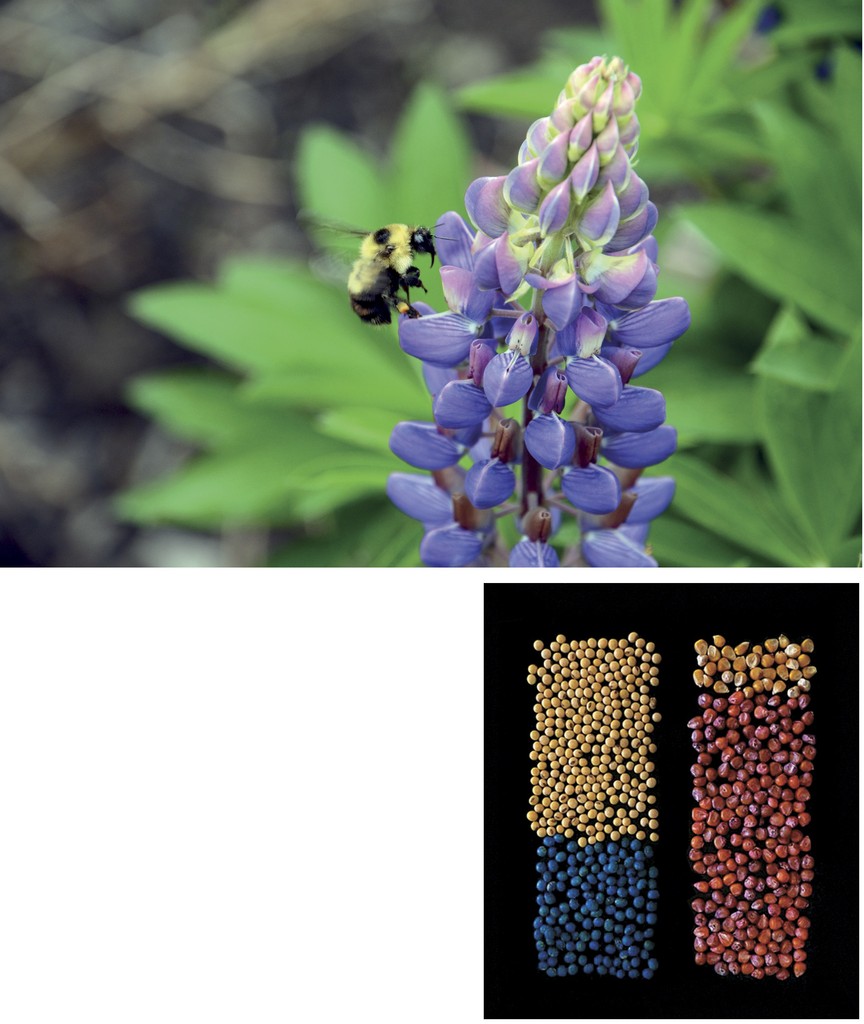
Bee on a flower in Canada, one of the countries where neonicotinoids—insecticides that coat commercial seeds (below)—are affecting bee populations3 Jeremy T. Kerr | Ian Grettenberger/Penn State
Two field studies have found evidence that neonicotinoids, a class of insecticide derived from nicotine and often used to control agricultural pests, may produce negative effects in some wild and domesticated bee populations (Science, June 30, 2017). One study was conducted over a two-year period at 33 sites across three European countries. In Hungary, the study found an average decline of 24% in the number of worker bees in colonies near canola fields treated with clothianidin, a pesticide of that class. Bees in the vicinity of fields treated with thiamethoxam, another neonicotinoid, showed no harmful effects. In the United Kingdom, the findings were similar but the data were statistically insignificant. In Germany however, the study found no harm to bees that may have been associated with the use of the insecticide. Richard Pywell, an ecologist at the Centre for Ecology and Hydrology in Wallingford, England, who led the study, believes it is possible that the German bees were unaffected because their colonies were healthier than those in the other two countries. He also does not dismiss the possibility that the wildflowers growing near the planted fields in Germany may have provided the bees with extra resources that made them stronger. Another study, conducted independently in Canada, found that honeybee colonies exposed to neonicotinoids in cornfields for up to four months had fewer worker bees and might even be left without a queen. Manufacturers of the insecticides believe the studies do not represent field-realistic levels of these chemicals. In 2013, the European Union declared a moratorium on the use of three neonicotinoids in plantations of canola and other crops that produce flowers—an attractant for bees. Rather than being sprayed into the air, these insecticides are coated onto commercial seeds in a thin colored layer.
Republish